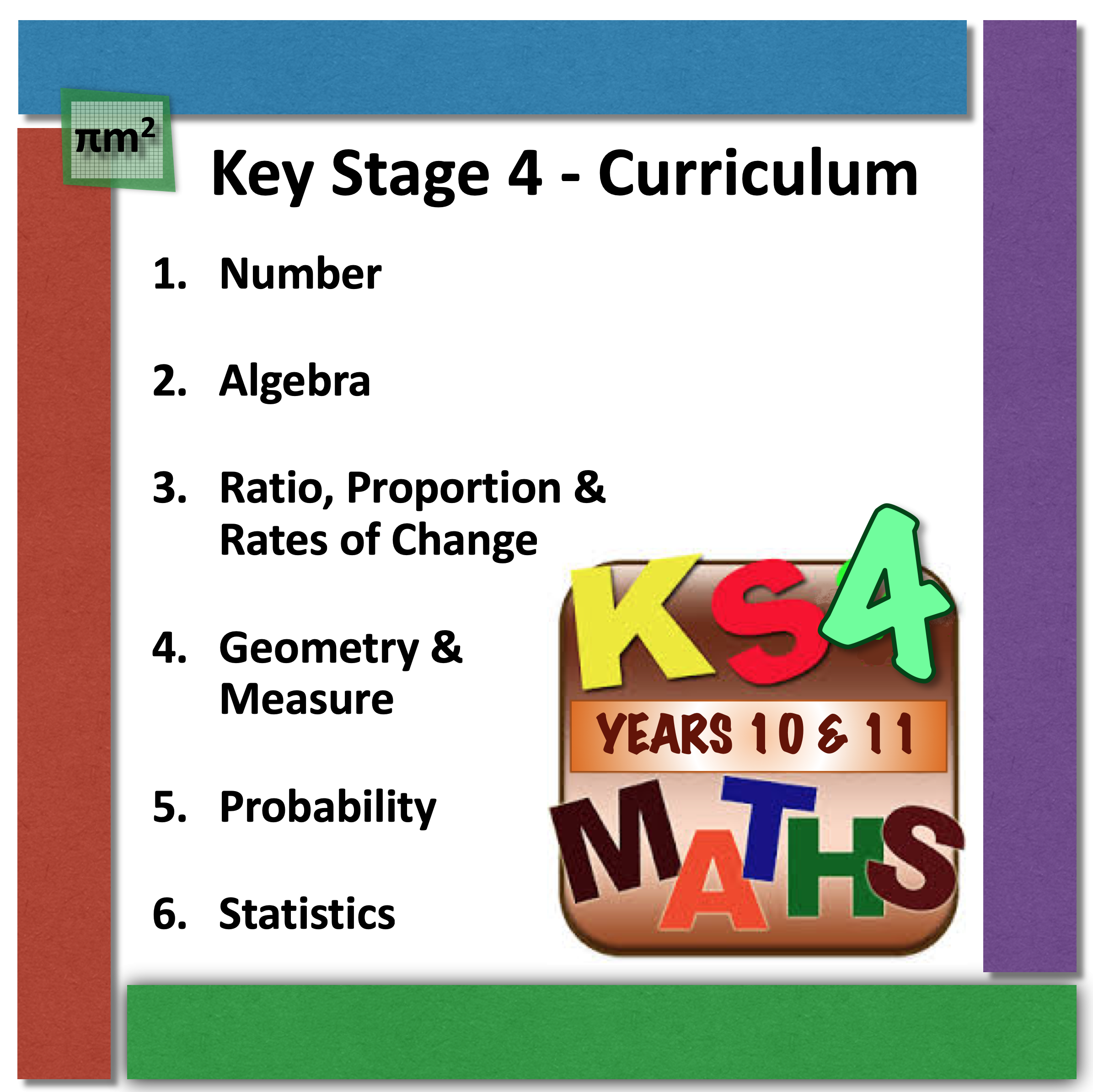Key Stage 4 - GCSEs
Key Stage 4 (KS4) covers the two GCSE years - Year 10 and Year 11. Together the mathematical content set out in KS3 and KS4 programmes of study covers the full range of material contained in the GCSE Mathematics (grades 9-1) qualification. Depending on a pupils’ security of understanding and readiness, pupils will either sit the Foundation (grades 5-1) or Higher (grades 9-4) tier of the GCSE.
At the end of Year 11 children complete their GCSEs and they consist of three mathematics papers. Follow the links to download free samples of these papers at both Foundation Tier and Higher Tier level.
The Maths Mum® is not currently offering a course covering all of KS4, as the content is too much to put into one sitting. However if you would like help at this level, we can offer bespoke courses on a topic(s) basis.
The programme of study for KS4 is organised into apparently distinct domains, but pupils should develop and consolidate connections across mathematical ideas. They should build on learning from KS3 to further develop fluency, mathematical reasoning and competence in solving increasingly sophisticated problems. They should also apply their mathematical knowledge wherever relevant in other subjects and in financial contexts.
DEVELOP FLUENCY - consolidate their numerical and mathematical capability from key stage 3 and extend their understanding of the number system to include powers, roots; select and use appropriate calculation strategies to solve increasingly complex problems, including exact calculations involving multiples of π, use of standard form and application and interpretation of limits of accuracy; consolidate their algebraic capability from key stage 3 and extend their understanding of algebraic simplification and manipulation to include quadratic expressions; extend fluency with expressions and equations from key stage 3, to include quadratic equations, simultaneous equations and inequalities; move freely between different numerical, algebraic, graphical and diagrammatic representations, including of linear, quadratic, reciprocal, functions; and use mathematical language and properties precisely.
REASON MATHEMATICALLY - extend and formalise their knowledge of ratio and proportion, including trigonometric ratios, in working with measures and geometry, and in working with proportional relations algebraically and graphically; extend their ability to identify variables and express relations between variables algebraically and graphically; make and test conjectures about the generalisations that underlie patterns and relationships; look for proofs or counter-examples; begin to use algebra to support and construct arguments; reason deductively in geometry, number and algebra, including using geometrical constructions; interpret when the structure of a numerical problem requires additive, multiplicative or proportional reasoning; explore what can and cannot be inferred in statistical and probabilistic settings, and express their arguments formally; and assess the validity of an argument and the accuracy of a given way of presenting information.
SOLVE PROBLEMS - develop their mathematical knowledge, in part through solving problems and evaluating the outcomes, including multi-step problems; develop their use of formal mathematical knowledge to interpret and solve problems, including in financial contexts; make and use connections between different parts of mathematics to solve problems; model situations mathematically and express the results using a range of formal mathematical representations, reflecting on how their solutions may have been affected by any modelling assumptions; and select appropriate concepts, methods and techniques to apply to unfamiliar and non- routine problems; interpret their solution in the context of the given problem.
The maths curriculum is split into six key sections (see below).

